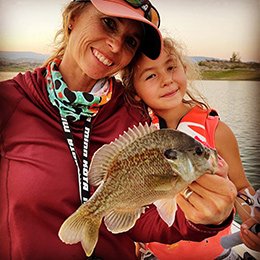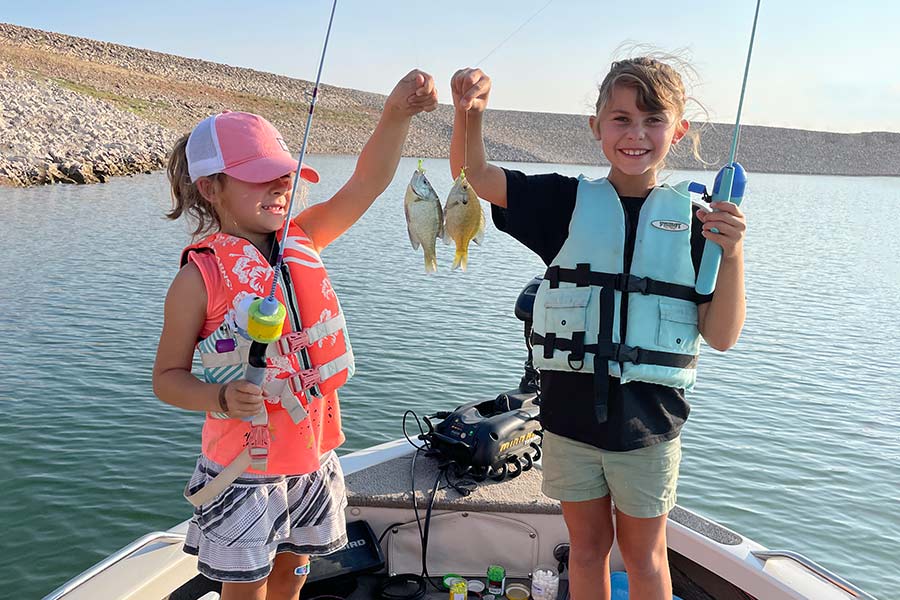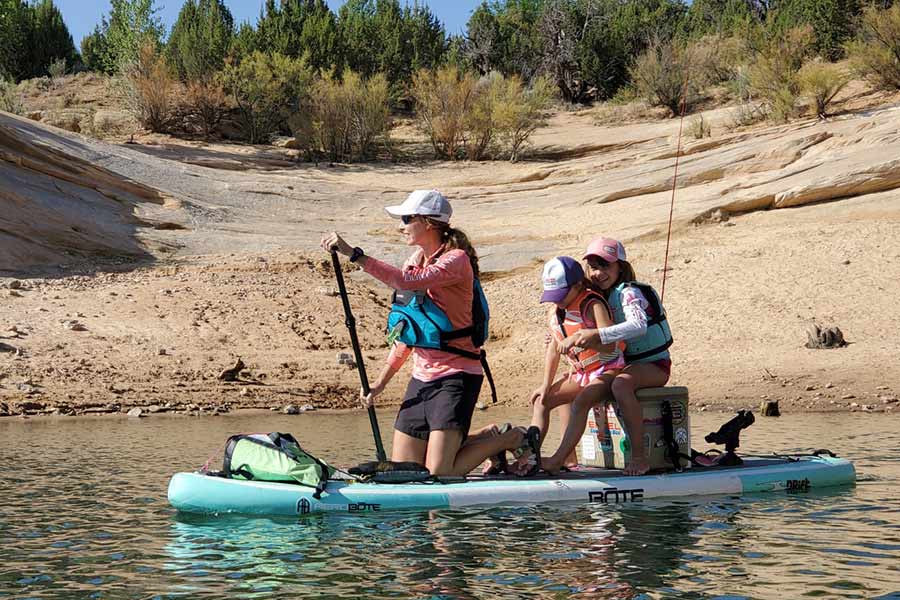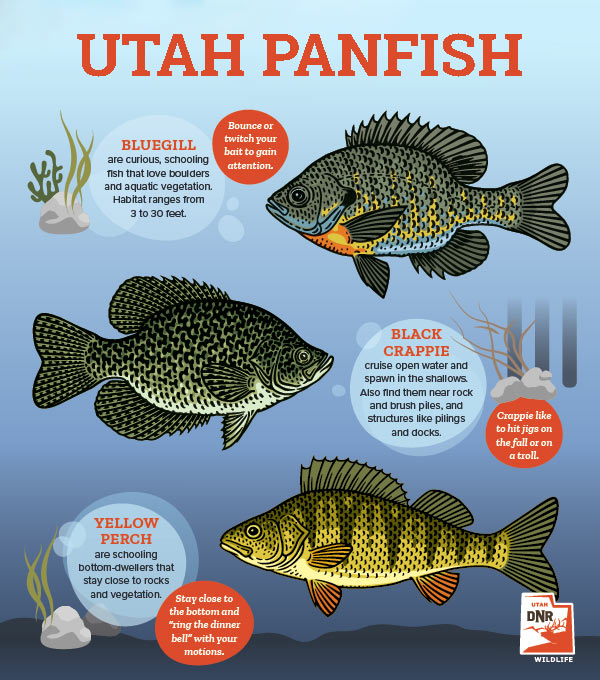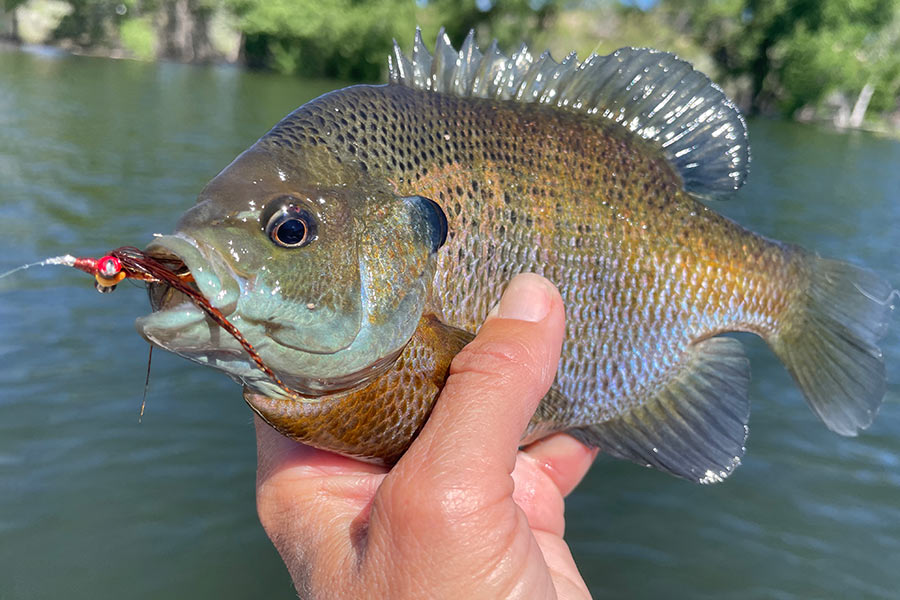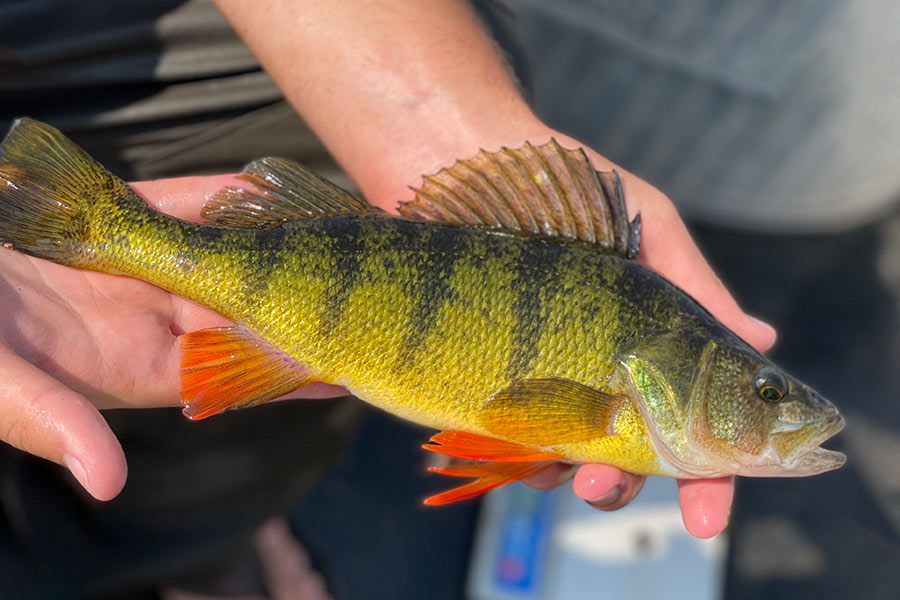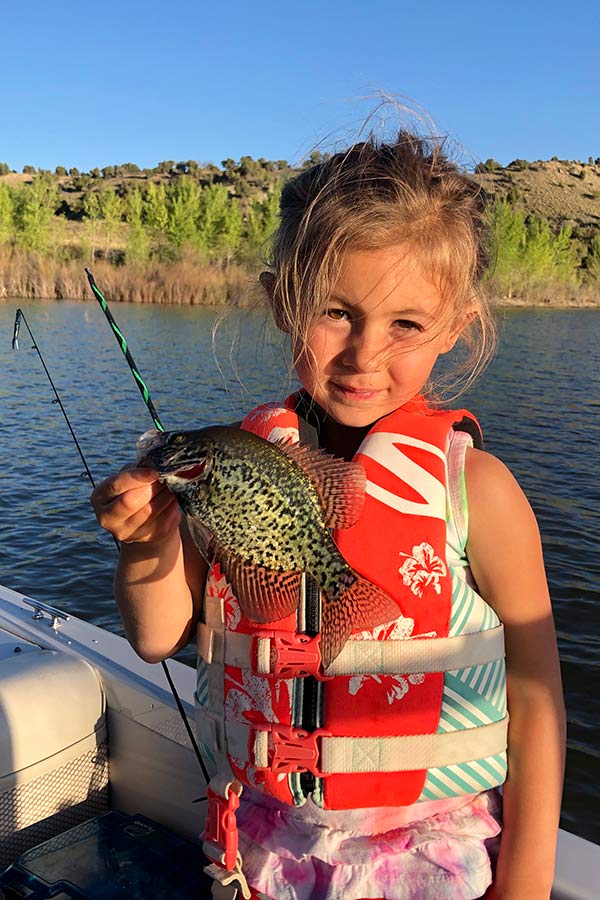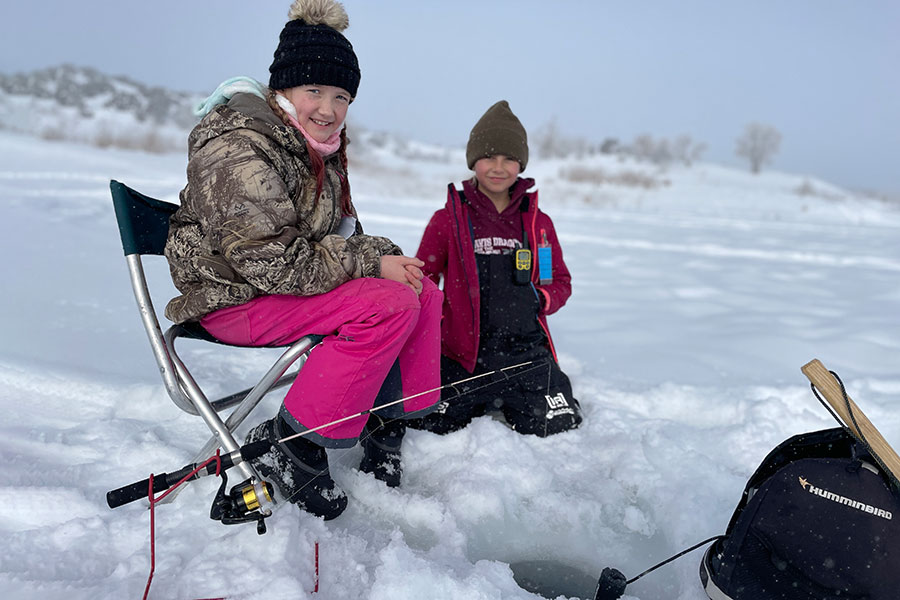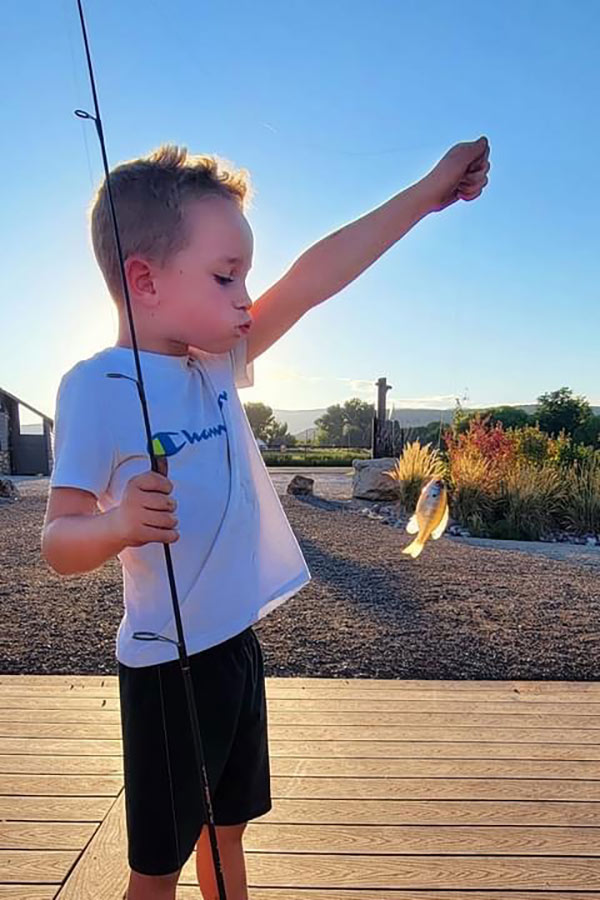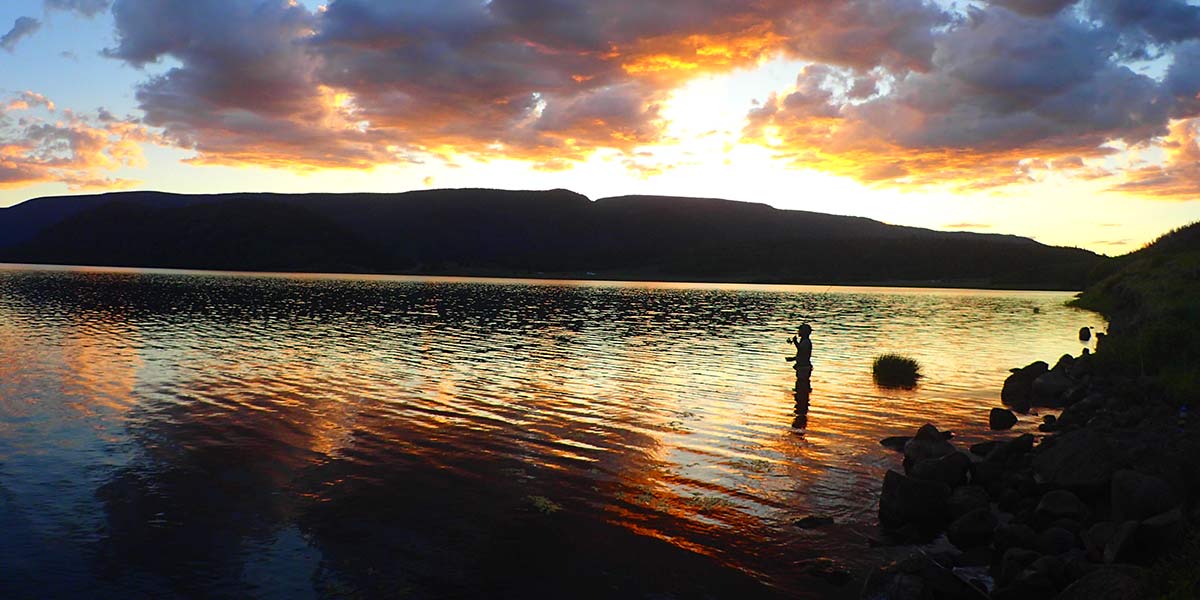How to catch panfish
Tips for where to find panfish, selecting basic equipment, effective bait and lures, fishing techniques and more!
Natalie Boren
Regional Aquatics Manager, DWR Northeastern Region
Summertime in Utah means warming waters and active panfish! As a mom of two little girls, there is nothing better than catching panfish on a warm summer evening with your kids. Panfish are fun fishing for anglers of all ages and abilities.
What are panfish?
Panfish is a general term used to describe small, generally warmwater fish that could fit in a frying pan. Some of the most popular panfish species in Utah are bluegill, yellow perch, and black and white crappie.
Some interesting info about Utah's panfish populations:
- No panfish are native to Utah. Many Western states have been stocking panfish for decades and they have established well out of their native range.
- Bluegill are the most popular panfish, as well as the most widespread and abundant. They can be found in over 50 lakes and ponds throughout the state.
- Bluegill and green sunfish are commonly mistaken as the same fish, however they are different species of fish.
- Yellow perch are becoming a popular panfish to catch in Utah, although they aren't as abundant as other types of panfish. They're found in approximately 23 waters in Utah, and are fun to catch in both summer and winter months!
- Black and white crappie are popular panfish, but have limited quantities and distribution in our state. They can be found in over 20 waters in Utah.
- In Utah, we stock mostly bluegill and black crappie. We source the majority of these fish from Arkansas, and they are only 2–3 inches long when stocked. Both species reproduce well, and once established they rarely need to be stocked again.
New to fishing?
- See the Utah Fishing Guidebook (guía en español, Guía de pesca de Utah) for the state's fishing rules and regulations, including what kind of fish you can catch in Utah, and how many fish you can keep.
- Buy a fishing license (ages 12 and older).
- Find places to fish near you.
- Fishing access for anglers with physical challenges.
Panfish behavior and habitat
The biggest thing to remember about fishing for any species is that once you understand their behavior patterns and what habitat and food sources they prefer, it's much easier to catch fish no matter where you go. Since we are headed into the summer months we will focus on warmwater habitat for panfish.
Bluegill habitat ranges from 3 to 30 feet of water in the summer months. These panfish school, and are very curious fish by nature. They will often come to you as you park your boat, kayak or float tube. Early in the summer (June and July) they are building nests and getting ready to spawn. Males make and guard the nests, which are generally in 2–8 feet of water.
This can be an extremely fun time to catch bluegill, but anglers should take care to avoid walking on or fishing directly over nests to give the next generation of fish a better chance of survival. Bluegill love boulders, bulrush and virtually any type of submerged aquatic vegetation.
Yellow perch habitat is generally deeper. These fish are a bottom-dwelling species that stay close to rocks and vegetation. They are also a schooling fish by nature — where you find one you will usually find others! They do push up into shallow water in the summer months and can be caught alongside bluegill and crappie.
Black crappie habitat favors some similarities and differences from bluegill and yellow perch. Crappie like to cruise more open water and stay suspended in the water column most of the year. However, they spawn in shallow waters and love submerged brush piles. They also love structures like rock piles, bridge pilings, under docks and submerged trees. In some Utah fisheries you can catch crappie and bluegill in the same habitat and at the same time.
Where to catch panfish in Utah
You'll find great places to fish in reservoirs, lakes and rivers throughout Utah. On our Fish Utah map, you can search by waterbody name, species type and more. Fishing is a favorite activity at Utah's state parks, community ponds and Blue Ribbon Fisheries. You can also call the DWR office in the region you would like to fish for more information.
There are over 100 different reservoirs, lakes and ponds to target panfish in Utah. Lake Powell, Mantua Reservoir, Quail Creek Reservoir, Fish Lake and Steinaker Reservoir are some of my family's favorite places to fish.
One of the greatest things about panfish is that you can catch them from shore and from a boat. You can catch them from a fishing pier at community fishing ponds throughout Utah. You can even catch them when you're not even trying some days!
Equipment, bait and lures
Panfish species are most active in the warmer months (June, July, August and even September). However, if ice fishing is your jam, targeting panfish through the ice is very exciting! Panfish preferences (called patterns) are very different between the two seasons and serious anglers can spend days trying to figure these patterns out each season. Both seasons can yield delicious fish dinners for you and your family.
Basic equipment
For panfish, you can start with entry level tackle and a small budget! You should choose a ultralight or light action spinning rod for adults and older youth, and a classic "Barbie" pole with a 4-pound test line will work just fine for smaller kids. (See this DWR blog post for more tips on choosing basic equipment.)
If you ice fish, you can easily use an ice rod for a bluegill pole in the summer. I replace the line that is prespooled on the reels with a 3- to 4-pound monofilament line to help with the tangles and keep kids fishing longer.
Pro parenting tip: A few years ago I started attaching a chunk of pool noodle to my kids' rod and reel combo using electrical tape. Why? We lost a few too many fishing poles in the lake one year! This keeps them afloat long enough for someone to grab it.
Lures and bait
Keep it simple for panfish! On occasion you can catch a bluegill on a bare hook, but you'll want to have the following basic supplies on hand for panfish:
- 1/32- and 1/16-ounce jig heads (painted or silver)
- 1–1 ½ inch plastic tube jigs in a variety of colors
- Nightcrawlers (you will tip your jigs with a small piece of crawler, don't use the whole thing)
- Crappie nibbles
- Gulp minnows
- Other baits like salmon eggs, corn or a small chunk of hot dog (not a joke!)
- Crappie like minnow imitations such as small spoons and even small crank baits
- See this DWR blog post for more tips on choosing bait and lures
Fly fishing for panfish
If you are a fly angler and have never targeted panfish on the fly, you are missing out! Here are some tips for catching panfish with fly gear:
- Use a 3- or 4-weight fly rod with either a floating line or a sink tip line.
- Panfish will hit a variety of different flies such as insect patterns and terrestrial bug patterns, and if they are big enough panfish they will hit frog patterns.
- If panfish are not active on the surface, switch to a sink tip line and pull a scud, midge or damselfly larvae pattern. I have even caught nice panfish on small clouser patterns in craw and olive colors.
Don't be surprised if you pick up a largemouth bass on your fly patterns — if that happens, enjoy the battle!
Basic technique
One of the greatest things about targeting panfish is that they are some of the easiest and most entertaining fish species to catch. Some tips to get started:
- Brand new to fishing? See this DWR blog post about the basics of casting line and catching fish
- Cast the jig out or fish it directly below the boat. Slow bounces along the bottom or jigging/twitching motions will help you be successful.
- For yellow perch, stay close to the bottom and "ring the dinner bell" with your jigging motions.
- Crappie like to hit the jigs on the fall or on a troll.
- If you encounter "finicky" panfish, downsize and slow your presentation way down.
Where to start fishing for panfish?
Keeping in mind the habitat preferences for different species, some great places to start casting for panfish include:
- Around fishing piers or docks that allow public fishing.
- In the backs of bays in shallow water.
- Find rip rap, boulders, or cobbles and fish just above them.
- Community fishing ponds in your area!
Know the rules before you go
No matter your age, you'll want to be familiar with Utah's fishing regulations before you head out to fish. Some waterbodies have special regulations about the number and size of fish you can harvest, seasonal closures or bait restrictions. Other waters are covered under what is commonly known as general regulations.
Fortunately, the Utah Fishing Guidebook contains all the information you need to get started. The guidebook can readily be found online in English and Spanish, or you can pick up a print copy at all DWR offices, license agents and many sporting goods stores all over the state.
See the Rules for specific waters section beginning on page 25 of the Utah Fishing Guidebook to see if the waterbody you are heading to has special regulations. For example, most places in Utah have a limit of 50 panfish, however some waterbodies — like Starvation and Big Sand Wash reservoirs — have a 10 panfish limit to encourage a diversity of fish species in those waters. If you need any assistance understanding the rules, don't hesitate to contact one of our offices for any questions you may have.
Go fish!
Panfish are a blast to catch! Watching my two girls catch dozens of bluegill on summer nights is priceless. And trying to get them to leave the lake once it is dark is a great problem to have. Teach them young, get them outside and show them how to fish — it will pay off!
Learn more
-
Receive seasonal fishing forecasts:
Sign up to receive emails about fishing forecasts at many popular waterbodies, and visit the online fish stocking report to see the latest details about where and when we've stocked fish around the state! -
See helpful fishing articles:
Check out our fun, info-packed blog posts for more information about learning to fish and for insights about where to go and what to catch!- Learn to fish series:
- Species to catch and recipes:
